Have you ever wondered what a mold inspection involves? As the name suggests, a mold inspection is a thorough examination of a property to detect the presence of mold and assess its extent. Mold is a type of fungus that grows in damp and humid environments, and can lead to various health problems and property damage if left unchecked.
The mold inspection process typically involves visual inspections, moisture testing, sampling, and laboratory analysis. This is carried out by a professional mold inspector, who has the necessary expertise and tools to identify and evaluate mold growth.
In this article, we will explore the mold inspection process in detail and shed light on the importance of hiring a professional mold inspection company. We will also discuss the potential risks of mold growth, the benefits of early detection and remediation, and the typical costs associated with mold inspections. So, let’s dive in to unravel the truth about mold inspections!
Understanding the Mold Inspection Process
A mold inspection is more than just a visual inspection of the visible signs of mold growth. A comprehensive mold inspection involves multiple steps to identify the extent of the mold problem and determine the most effective course of action for remediation.
The following are the primary steps involved in a mold inspection:
| Step | Description |
|---|---|
| Visual Inspection | A professional mold inspector visually inspects the property to locate signs of mold growth, moisture sources, and areas of potential mold growth. This includes inspecting walls, floors, ceilings, HVAC systems, and other areas where mold may thrive. |
| Moisture Testing | The inspector uses moisture meters, thermal imaging, and other equipment to identify areas of excess moisture that may be contributing to mold growth. Moisture testing also helps to determine the extent of the mold problem and identify hidden sources of mold growth. |
| Sampling | The inspector collects air and/or surface samples to determine the type and concentration of mold present in the property. |
| Laboratory Analysis | The collected samples are sent to a laboratory for analysis to determine the specific species of mold present and its concentration level. |
Mold inspectors also use specialized equipment such as borescopes, moisture sensors, and thermal imaging cameras to pinpoint mold growth and affected areas that may be hidden from plain sight.
It’s important to note that mold inspections should always be performed by a qualified and experienced professional. Mold inspectors have the expertise and tools necessary to identify mold growth and determine the extent of the problem, helping property owners take the necessary steps for remediation.
Choosing the Right Mold Inspection Company
When it comes to mold inspections, choosing the right company is crucial. Not all companies are created equal, and selecting an unqualified or unreliable inspector can lead to inaccurate results and costly mistakes.
Here are some key factors to consider when choosing a mold inspection company:
| Factor | Importance |
|---|---|
| Experience | High |
| Certifications | High |
| Reputation | High |
| Customer Reviews | Medium |
Experience is arguably the most important factor when choosing a mold inspection company. Look for inspectors who have been in the industry for at least a few years and have completed numerous inspections. Experienced inspectors are more likely to identify potential issues and provide accurate recommendations for remediation.
Certifications are also essential. Reliable mold inspectors should have certifications or licenses in mold assessment or remediation, indicating that they have the appropriate training and expertise to perform inspections. This includes certifications from reputable organizations such as the American Council for Accredited Certification (ACAC) or the National Organization of Remediators and Mold Inspectors (NORMI).
Reputation is another critical factor. A reputable mold inspection company should have positive reviews from previous customers and no history of complaints or legal issues. You can check websites such as the Better Business Bureau (BBB) or Yelp to get an idea of a company’s reputation.
Lastly, consider customer reviews, although they should not be the only factor. Reading reviews from previous customers can give you a sense of the company’s customer service, responsiveness, and overall professionalism.
The Importance of Mold Inspections
Mold growth is a common problem in homes and buildings, and it can have serious implications for both health and property safety. Mold releases spores into the air, which can cause allergies, respiratory issues, and other health problems for occupants. It can also compromise the structural integrity of a building if left unchecked.
Many homeowners are unaware of the potential risks associated with mold growth or may not recognize the signs of mold in their homes. That’s why mold inspections are crucial for early detection and remediation of mold problems.
Benefits of Mold Inspections
A mold inspection can bring numerous benefits to a property owner or occupant. Here are some of the most significant advantages:
- Prevention of health issues: Mold is known to cause various health problems, particularly respiratory issues, allergies, and skin irritation. By detecting and removing mold early on, a mold inspection can prevent these health issues from worsening.
- Maintaining indoor air quality: Mold spores can circulate in the air and affect the indoor air quality, leading to unpleasant odors and potentially hazardous conditions. A mold inspection can identify the sources of mold growth and prevent the spread of spores.
- Preserving property value: Mold can cause significant damage to the structure of a property if left unchecked. A mold inspection can identify potential problems and prevent significant damage, thus preserving the property’s value.
- Saving on costs: Early detection and remediation of mold can save property owners money in the long run. By fixing the issue before it becomes more significant, property owners can avoid costly repairs, renovations, and healthcare expenses.
Importance of Regular Mold Inspections
Regular mold inspections are crucial for property owners who want to maintain a healthy and safe environment. Mold can grow quickly and silently, making it difficult to detect without the help of a mold inspection professional.
By scheduling regular mold inspections, property owners can stay ahead of mold problems and protect their property’s value and the health of the occupants. It is recommended to have a mold inspection once a year or whenever there is a sign of mold growth, such as a musty smell or visible mold spots.
The Cost of Mold Inspections
The cost of a mold inspection can vary widely, depending on several factors.
| Factors Influencing Mold Inspection Costs |
|---|
| Size of the property |
| Extent of the inspection |
| Location |
A mold inspection for a small apartment may cost less than a inspection for a large commercial building. Additionally, if the inspection requires more extensive testing, such as air quality testing or lab analysis, the price may increase.
It’s important to keep in mind that the cost of a mold inspection may be a small price to pay compared to the potential costs of not detecting mold early. If left untreated, mold growth can lead to significant structural damage to a property and potentially expensive health issues for occupants.
Understanding the Implications of Mold
Mold growth can pose serious risks to the health and safety of occupants, as well as the integrity of the property. If left unchecked, mold can spread rapidly and weaken the structural components of the building, potentially leading to costly repairs down the line.
One of the most concerning aspects of mold growth is the potential health hazards it presents. Mold spores can trigger allergic reactions, respiratory issues, and other health problems, especially for those with pre-existing conditions or weakened immune systems. In some cases, exposure to toxic molds can lead to more severe health issues.
Furthermore, mold growth can compromise the indoor air quality of the property, leading to unpleasant odors and discomfort for occupants. This can be especially problematic for businesses that rely on a clean and safe environment, such as healthcare facilities and restaurants.
Proactive mold inspections are critical for minimizing these risks. By identifying and addressing mold growth early on, property owners can protect the health of occupants and preserve the value of their assets.
Frequently Asked Questions (FAQ) About Mold Inspections
How often should I have a mold inspection?
It is recommended to have a mold inspection at least once a year, especially if you live in an area prone to moisture or have experienced water damage in the past. However, if you notice any signs of mold growth or have recently had a water issue, it is best to have an inspection done as soon as possible.
How long does a mold inspection take?
The duration of a mold inspection depends on the size of the property and the extent of the inspection required. A standard inspection for a small to medium-sized property usually takes around two to three hours. However, a larger property or a more thorough inspection can take up to a full day.
What is the role of homeowners during a mold inspection?
Homeowners are not required to do anything during a mold inspection, but they should ensure that the inspector has access to all areas of the property. Homeowners should also communicate any concerns they may have, such as recent water damage or the presence of any visible mold.
Are there mold inspection services near my location?
Most mold inspection companies offer services in multiple locations. You can search online for “mold inspection near me” to find local providers or check with your local health department for recommendations.
How much does a mold inspection cost?
The cost of a mold inspection varies depending on factors such as the size of the property, the extent of the inspection required, and the location. On average, a mold inspection can cost anywhere from $300 to $600. However, additional costs may apply if mold remediation is necessary.
Can mold inspections be harmful to my health?
No, mold inspections are not harmful to your health. However, if mold is present and goes undetected, it can cause health issues. Mold can trigger allergies, worsen asthma symptoms, and cause respiratory issues. Early detection and remediation can prevent these health risks.
What is the difference between mold inspection and mold testing?
A mold inspection is a thorough visual examination of a property to identify any signs of mold growth and assess the risk of continued growth. On the other hand, mold testing involves taking samples of suspected mold and analyzing them in a laboratory to determine the type and quantity of mold present. Mold testing is usually conducted after a mold inspection to confirm the results.
Can I do a mold inspection myself?
While it is possible to conduct a mold inspection yourself, it is not recommended. Mold inspections require expertise and specialized equipment, and the risks associated with mold exposure make it best to leave the work to professionals. Professional mold inspectors have the training and tools necessary to identify hidden mold growth and assess the risk of continued growth.
Key Takeaways About Mold Inspections
Mold inspections are crucial for maintaining a healthy and safe indoor environment. Here are the key takeaways from this article:
- A mold inspection is a process of identifying and assessing mold growth in a property.
- The inspection process involves visual examination, moisture testing, sampling, and lab analysis.
- Professional mold inspectors have the expertise and tools to conduct thorough inspections.
- When choosing a mold inspection company, consider their experience, certifications, reputation, and customer reviews.
- The importance of mold inspections lies in preventing potential health risks, structural damage, and property devaluation.
- Early detection and remediation of mold can save costs in the long run.
- The cost of mold inspections depends on various factors such as property size and location.
- Leaving mold growth unattended can compromise indoor air quality and lead to health issues.
- Proactive mold inspections are crucial for minimizing risks associated with mold growth.
Frequently Asked Questions (FAQ) About Mold Inspections
Here are some common questions and answers related to mold inspections:
What is a mold inspection?
A mold inspection is a process conducted by a professional to assess the presence and extent of mold growth in a property. It typically involves visual inspections, moisture testing, sampling, and laboratory analysis.
How often should I get a mold inspection?
The frequency of mold inspections depends on several factors, such as the age and condition of the property, past mold issues, and the presence of damp or humid conditions. A professional mold inspector can provide guidance on the recommended frequency of inspections.
How long does a mold inspection take?
The duration of a mold inspection depends on the size of the property, the extent of the inspection, and the complexity of the mold issues. On average, a mold inspection can take anywhere from 1 to 3 hours.
What is the role of homeowners during a mold inspection?
Homeowners should provide the mold inspector with access to the property and any areas of concern. They should also provide information about any past mold issues or water damage, as well as any symptoms of mold exposure they may have experienced.
How do I choose a reliable mold inspection company?
When selecting a mold inspection company, it’s important to consider factors such as experience, certifications, reputation, and customer reviews. Look for a company that employs qualified and experienced mold inspectors, uses state-of-the-art equipment, and offers comprehensive mold inspection and testing services.
Is it necessary to hire a mold inspection company near me?
While it’s not always necessary to hire a mold inspection company near you, it can be beneficial to choose a company that is familiar with the local climate and environmental conditions. This can help ensure accurate assessments and recommendations for mold remediation.
What are the costs of mold inspections?
The costs of mold inspections vary depending on factors such as the size of the property, the extent of the inspection, and the location. On average, mold inspections can range from $200 to $600. Additional costs may apply if mold remediation is required.
Can mold inspections prevent future mold growth?
Yes, mold inspections can help prevent future mold growth by identifying and addressing the root cause of mold growth, such as moisture or humidity issues. Early detection and remediation of mold can also help minimize the risk of property damage and health issues associated with mold exposure.










